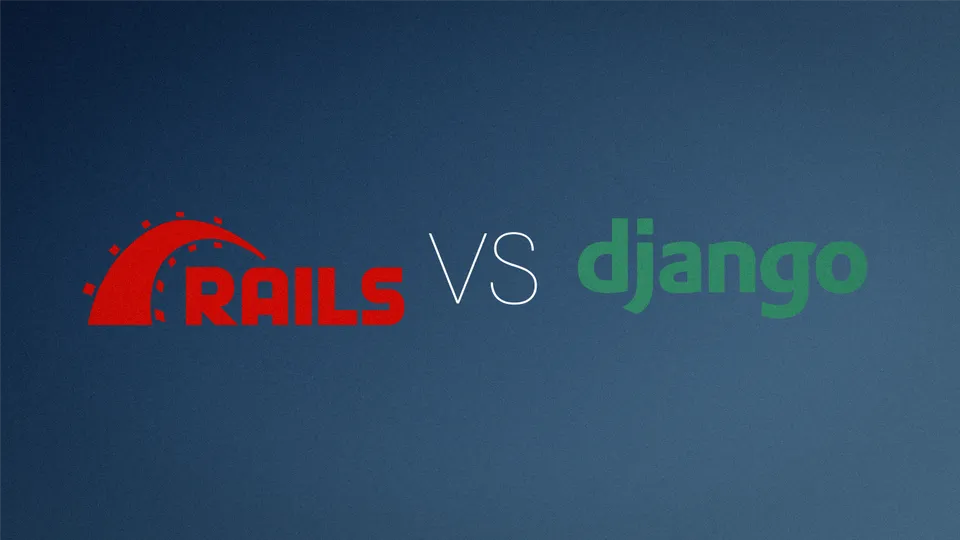
Rails vs Django: A Comparative Guide with Code Examples
When it comes to building web applications, two of the most popular frameworks are Ruby on Rails and Django. Both are powerful and have their unique strengths, making them suitable for different use cases. In this post, we’ll compare Rails and Django, highlighting their features, and providing code snippets to demonstrate their capabilities.
Introduction to Ruby on Rails and Django
Ruby on Rails is a server-side web application framework written in Ruby under the MIT License. It is a model-view-controller (MVC) framework, providing default structures for databases, web services, and web pages.
Django is a high-level Python web framework that encourages rapid development and clean, pragmatic design. It follows the model-template-views (MTV) architectural pattern and emphasizes reusability and “pluggability” of components.
Setting Up
Ruby on Rails
First, install Rails and create a new project:
gem install rails
rails new blog_app
cd blog_appDjango
Install Django and create a new project:
pip install django
django-admin startproject blog_app
cd blog_app
python manage.py startapp blogExample: Creating a Simple Blog Application
Ruby on Rails
Generate a scaffold for the Post model:
rails generate scaffold Post title:string body:text
rails db:migrateRails automatically sets up the routes, controller, and views for CRUD operations. The
config/routes.rb file includes:
resources :postsThe app/controllers/posts_controller.rb file handles CRUD operations:
class PostsController < ApplicationController
def index
@posts = Post.all
end
def show
@post = Post.find(params[:id])
end
def new
@post = Post.new
end
def create
@post = Post.new(post_params)
if @post.save
redirect_to @post
else
render 'new'
end
end
def edit
@post = Post.find(params[:id])
end
def update
@post = Post.find(params[:id])
if @post.update(post_params)
redirect_to @post
else
render 'edit'
end
end
def destroy
@post = Post.find(params[:id])
@post.destroy
redirect_to posts_path
end
private
def post_params
params.require(:post).permit(:title, :body)
end
endViews are in app/views/posts/. For example, index.html.erb:
<h1>Posts</h1>
<%= link_to 'New Post', new_post_path %>
<ul>
<% @posts.each do |post| %>
<li>
<%= link_to post.title, post %>
<%= link_to 'Edit', edit_post_path(post) %>
<%= link_to 'Destroy', post, method: :delete, data: { confirm: 'Are you sure?' } %>
</li>
<% end %>
</ul>Run the Rails server:
rails serverNavigate to http://localhost:3000/posts to see your application.
Django
Define the Post model in blog/models.py:
from django.db import models
class Post(models.Model):
title = models.CharField(max_length=100)
body = models.TextField()
def __str__(self):
return self.titleRun migrations:
python manage.py makemigrations
python manage.py migrateCreate views in blog/views.py:
from django.shortcuts import render, get_object_or_404, redirect
from .models import Post
from .forms import PostForm
def post_list(request):
posts = Post.objects.all()
return render(request, 'blog/post_list.html', {'posts': posts})
def post_detail(request, pk):
post = get_object_or_404(Post, pk=pk)
return render(request, 'blog/post_detail.html', {'post': post})
def post_new(request):
if request.method == "POST":
form = PostForm(request.POST)
if form.is_valid():
post = form.save(commit=False)
post.save()
return redirect('post_detail', pk=post.pk)
else:
form = PostForm()
return render(request, 'blog/post_edit.html', {'form': form})
def post_edit(request, pk):
post = get_object_or_404(Post, pk=pk)
if request.method == "POST":
form = PostForm(request.POST, instance=post)
if form.is_valid():
post = form.save(commit=False)
post.save()
return redirect('post_detail', pk=post.pk)
else:
form = PostForm(instance=post)
return render(request, 'blog/post_edit.html', {'form': form})
def post_delete(request, pk):
post = get_object_or_404(Post, pk=pk)
post.delete()
return redirect('post_list')Add URL patterns in blog/urls.py:
from django.urls import path
from . import views
urlpatterns = [
path('', views.post_list, name='post_list'),
path('post/<int:pk>/', views.post_detail, name='post_detail'),
path('post/new/', views.post_new, name='post_new'),
path('post/<int:pk>/edit/', views.post_edit, name='post_edit'),
path('post/<int:pk>/delete/', views.post_delete, name='post_delete'),
]Include these URLs in the main blog_app/urls.py:
from django.contrib import admin
from django.urls import path, include
urlpatterns = [
path('admin/', admin.site.urls),
path('', include('blog.urls')),
]Create templates in blog/templates/blog/. For example, post_list.html:
<h1>Posts</h1>
<a href="{% url 'post_new' %}">New Post</a>
<ul>
{% for post in posts %}
<li>
<a href="{% url 'post_detail' pk=post.pk %}">{{ post.title }}</a>
<a href="{% url 'post_edit' pk=post.pk %}">Edit</a>
<a href="{% url 'post_delete' pk=post.pk %}">Delete</a>
</li>
{% endfor %}
</ul>Run the Django server:
python manage.py runserverNavigate to http://localhost:8000/ to see your application.
When to Use Rails or Django
Rapid Prototyping and Startups
-
Ruby on Rails: Ideal for startups needing quick development and iteration. The built-in scaffolding and generators speed up the process.
- Example: A social networking app that needs to launch quickly to gain user feedback.
-
Django: Suitable for projects requiring complex data handling and robust security from the start.
- Example: A SaaS application that manages user accounts and requires an admin interface.
E-commerce Platforms
-
Ruby on Rails: Mature e-commerce platforms like Spree and Solidus provide robust features and customization.
- Example: An online store requiring quick deployment and ease of customization.
-
Django: Packages like Django Oscar and Saleor offer flexibility and scalability.
- Example: An e-commerce site integrating multiple payment gateways and managing a large inventory.
Content Management Systems (CMS)
-
Ruby on Rails: Platforms like RefineryCMS and Camaleon CMS can be highly customized.
- Example: A media company needing a customized CMS for multimedia content.
-
Django: Django CMS and Wagtail provide flexibility and ease of use.
- Example: A university website managing a large amount of academic content.
APIs and Backend Services
-
Ruby on Rails: Effective for creating RESTful APIs using built-in support or gems like
rails-api.- Example: A mobile app backend handling user data and notifications.
-
Django: Django Rest Framework (DRF) is powerful for building APIs.
- Example: An IoT platform managing device data and providing real-time updates.
Data-Driven Applications and Machine Learning
-
Ruby on Rails: Can integrate with external machine learning services.
- Example: A web application integrating with machine learning services for recommendations.
-
Django: Python’s ecosystem for data science and machine learning makes Django a natural choice.
- Example: A data analytics dashboard processing large datasets and providing insights.
Enterprise-Level Applications
-
Ruby on Rails: Suitable for enterprise applications needing rapid development and clean architecture.
- Example: An internal ERP system supporting evolving business processes.
-
Django: Django’s scalability and security features make it ideal for enterprise applications.
- Example: A CRM system integrating various data sources and ensuring high security.
Conclusion
Both Ruby on Rails and Django are powerful frameworks capable of building high-quality web applications. The choice between them depends on specific project requirements, team expertise, and personal preferences. Rails excels in rapid development and convention over configuration, making it ideal for startups and quick iterations. Django, with its robust built-in features and scalability, is perfect for data-driven applications, complex








